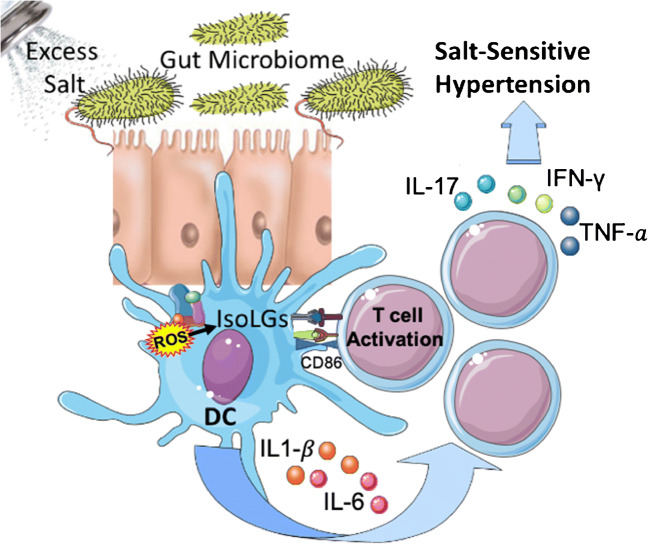Fig. 1.
Hypothesized model of how the gut microbiome may contribute to inflammation and salt-sensitive hypertension. Excess dietary salt alters the gut microbiome and activates DCs to produce ROS via NADPH oxidase. ROS production leads to IsoLG-adducted protein formation, presentation of co-stimulatory factor CD86, and secretion of pro-inflammatory factors IL-6 and IL-1β. The activated DCs promote T cell activation and stimulate the release of IL-17, TNF-α𝑎, and IFN-γ, leading to hypertension

